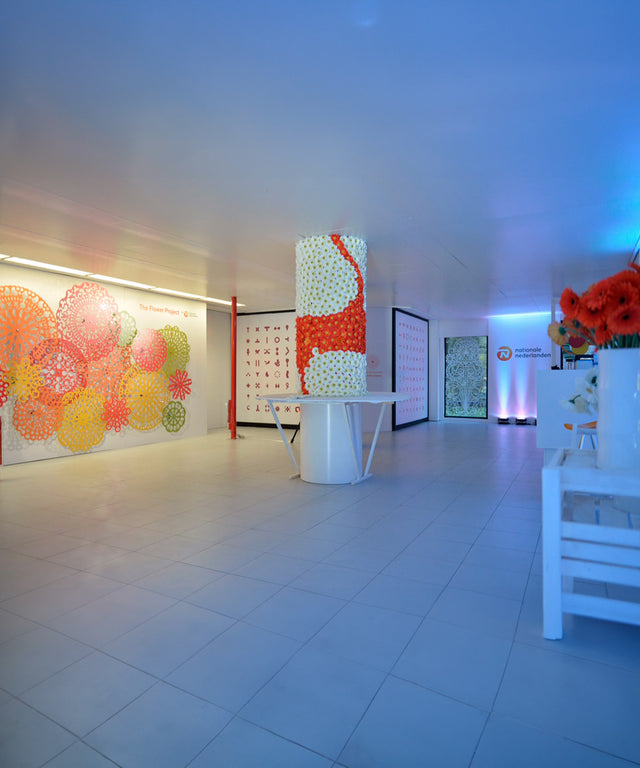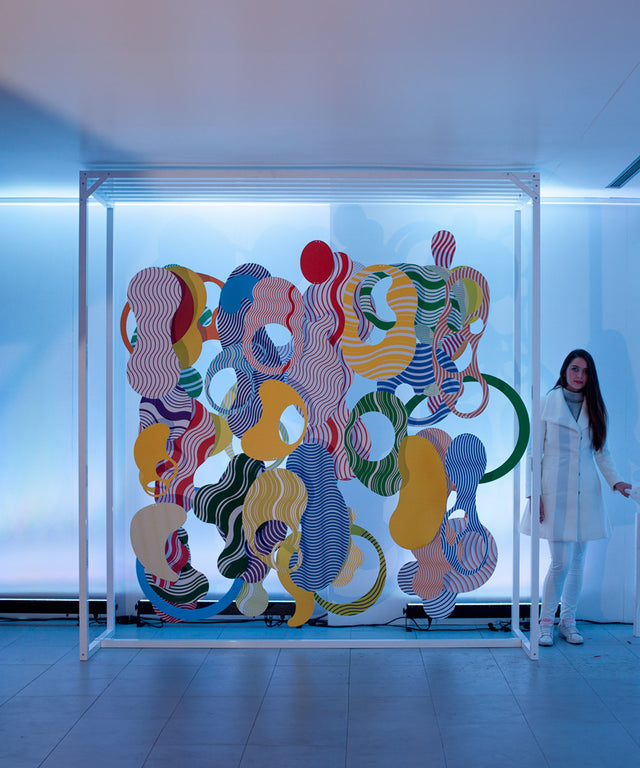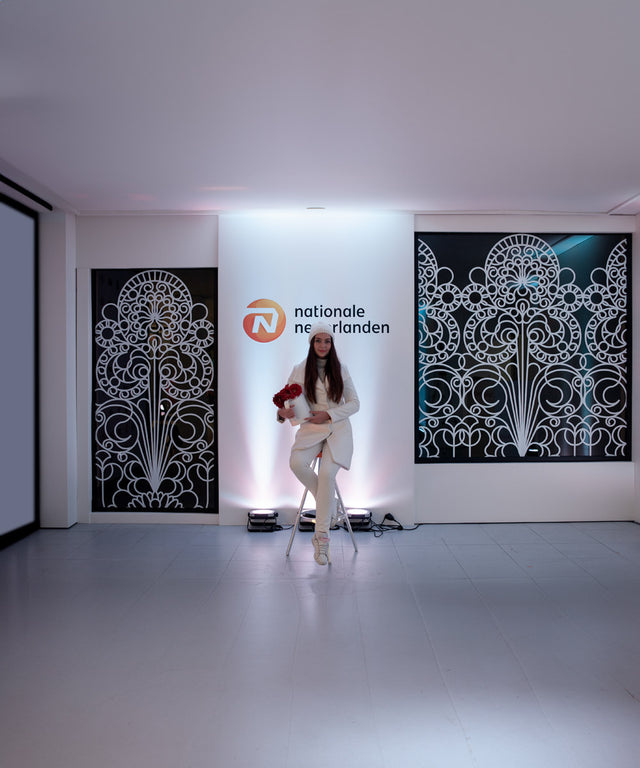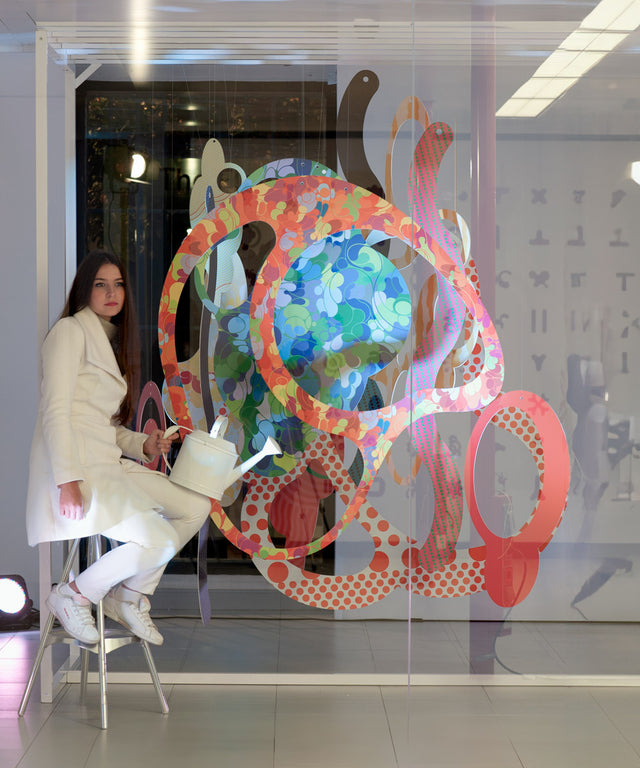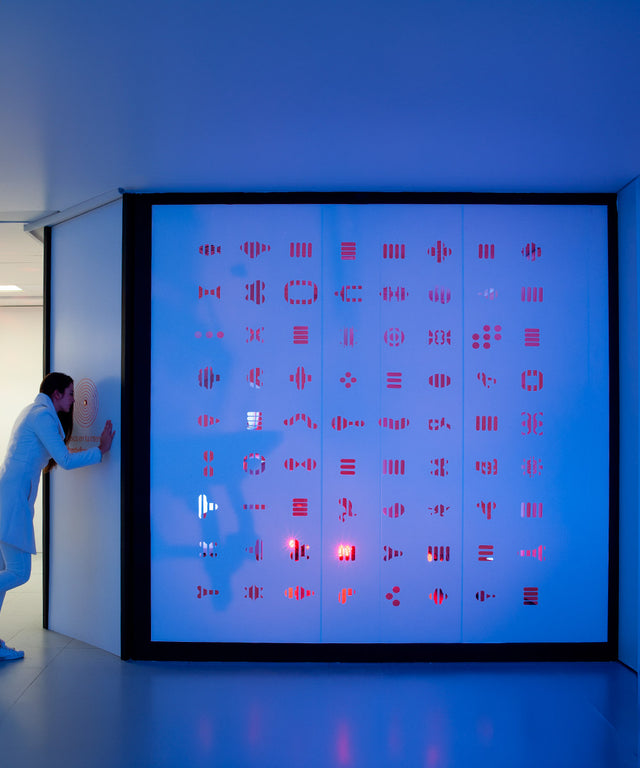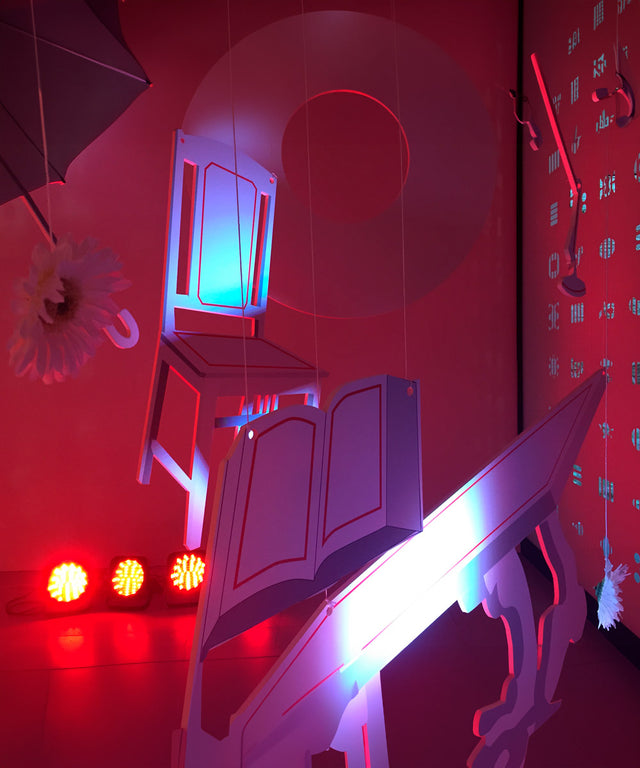The Flower Project
An Exhibition Collaboration with Nationale Nederlanden
A garden suspended in the middle of a corporate space.
Flower Project, or The Floating Garden.
An ephemeral installation designed not to deliver a closed message, but to open up an unusual space for recreation.
The exhibition consisted of a series of graphic and sculptural pieces built around the flower as a hybrid symbol. Here, the flower doesn’t represent beauty, nature, or romance. It represents the desire to imagine new possible relationships between humans and the plant world. A small device for thinking (and feeling) beyond design as mere functional decor.
In the heart of a busy pedestrian area in Seville, people were invited to come in and receive a flower. But that was just an excuse. The real aim was to get them inside—to immerse them in an environment that didn’t appeal to usefulness, but to the unexpected.
Partly inspired by the idea of complacent participatory aesthetics, The Floating Garden offered a kind of participation free from moral lessons. There was no feel-good storytelling or promise of personal growth. Just an experience. From the Rolling Garden—a large sculpture made of rotating pieces that visitors could spin—to the Floral Column painted with water-sensitive ink that revealed hidden drawings when wet, everything was designed to trigger a playful, almost childlike, interaction with the space.
On the opposite side, The Secret of the Flowers—a closed room visible only through a peephole—suggested the reverse: to look without entering, to observe without touching. The flower as an enigma.
This wasn’t about delivering a simple, uplifting message. It was about creating an atmosphere, a pause—a floating garden in the middle of someone’s ordinary day on the street. The hanging sculptures evoked cycles of life and mutation. The flower became a speculative agent—not a decorative object but a worldly companion, an “interspecies relative” that urges us to rethink the everyday.
Perhaps it was an expanded graphic intervention. Where design, pattern, color, and form were no longer components of a message, but part of a spatial choreography. A way of “painting those flowers that vanish in the air.”
